#Indian Physicist
Text

National Science Day is celebrated every year in India on 28 February to mark the discovery of the Raman Effect by the Indian physicist Sir Chandrasekhara Venkata Raman. He discovered the Raman Effect on 28 February 1928 and for this discovery, he was honored with the Nobel Prize in Physics subject in 1930.
Build your brand with digital media & take the benefits of social media branding contact Absolute Digital Marketing. by Absolutedigitalbranding.com #nationalscienceday
#Marktingstrategy #SEObrandingagency #SEO #PPC #SMO #SMM #SeoCompany #digitalmarketingcompany #socialmediamarketingcompany #absolutedigitalbranding #searchengineoptimization #advertisingagencyinmohali #facebook #twitter #marketingonline #brand #searchengineoptimization #internetmarketing #follow #digitalagency #marketingagency #motivation #digitalmarketingtips #onlinebusiness #websitedesign #marketingonline #brand #searchengineoptimization #content #ABSOLUTEDIGITALBRANDING #BEST #PUBLIC #RELATION #AGENCY #IN #CHANDIGARH #MOHALI #PUNJAB #NORTH #INDIA #onlinebranding #branding360degree #SEObrandingagency #websiteranking #websitetrafic #Digitalmarketing #OnlineAdvertising #instagrammarketing #advertisingagency #web #technology #internetmarketing #marketingonline #brand #searchengineoptimization #content #instagrammarketing #advertisingagency #web #technology #onlinebranding #buildingrelationships #globally #customer #internetbranding-at Absolute Digital Branding & Public relations
#National Science Day is celebrated every year in India on 28 February to mark the discovery of the Raman Effect by the Indian physicist Sir#he was honored with the Nobel Prize in Physics subject in 1930.#Build your brand with digital media & take the benefits of social media branding contact Absolute Digital Marketing. by Absolutedigitalbran#nationalscienceday#Marktingstrategy#SEObrandingagency#SEO#PPC#SMO#SMM#SeoCompany#digitalmarketingcompany#socialmediamarketingcompany#absolutedigitalbranding#searchengineoptimization#advertisingagencyinmohali#facebook#twitter#marketingonline#brand#internetmarketing#follow#digitalagency#marketingagency#motivation#digitalmarketingtips#onlinebusiness#websitedesign#content#ABSOLUTEDIGITALBRANDING
1 note
·
View note
Text

National Science Day is celebrated annually on February 28 to commemorate the discovery of the 'Raman Effect'. Sir Chandrasekhara Venkata Raman, an Indian physicist, announced the discovery of the 'Raman Effect' on February 28, 1928 . Build your brand with digital media & take the benefits of social media branding contact Media Heights. By Mediaheightspr.com #nationalscienceday
Digitalbranding #MEDIAHEIGHTS #advertisingagency #web #MEDIAHEIGHTSPRCOM #best #public #relation #agency #in #chandigarh #mohali #punjab #north #india #digitalmarketingcompany #searchengineoptimization #content #instagrammarketing #buildingrelationships #globally #customer #internetbanding — at media heights #smo #branding #facebook #twitter #marketingonline #brand #searchengineoptimization #internetmarketing #follow #digitalagency #marketingagency #motivation #digitalmarketingtips #onlinebusiness #websitedesign #marketingonline #brand #searchengineoptimization #content #instagrammarketing #advertisingagency #web #technology #onlinebranding #branding360degree #SEO #SEObrandingagency #websiteranking #websitetrafic #Digitalmarketing #mediaheights #OnlineAdvertising #instagrammarketing #advertisingagency #web #marketingonline #brand
#National Science Day is celebrated annually on February 28 to commemorate the discovery of the 'Raman Effect'. Sir Chandrasekhara Venkata Ra#an Indian physicist#announced the discovery of the 'Raman Effect' on February 28#1928 . Build your brand with digital media & take the benefits of social media branding contact Media Heights. By Mediaheightspr.com#nationalscienceday#Digitalbranding#MEDIAHEIGHTS#advertisingagency#web#MEDIAHEIGHTSPRCOM#best#public#relation#agency#in#chandigarh#mohali#punjab#north#india#digitalmarketingcompany#searchengineoptimization#content#instagrammarketing#buildingrelationships#globally#customer#internetbanding — at media heights#smo#branding
1 note
·
View note
Photo
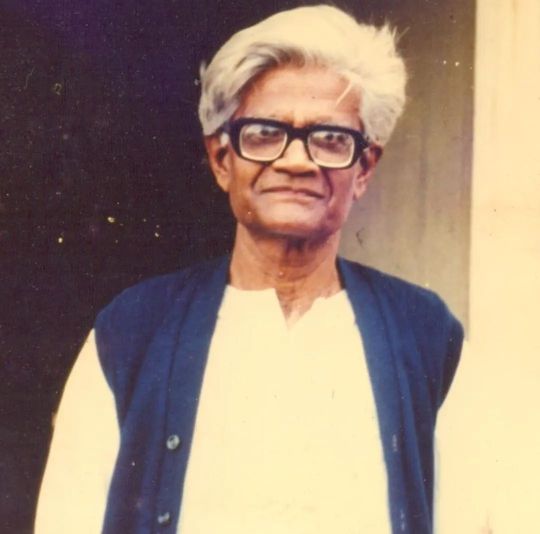
Amal Kumar Raychaudhuri (14 September 1923 – 18 June 2005) , The Hidden Indian Wizard. ⭐ Indian physicist, known for his research in general relativity and cosmology. ⭐ His most significant contribution is the eponymous Raychaudhuri equation, which demonstrates that singularities arise inevitably in general relativity and is a key ingredient in the proofs of the Penrose–Hawking singularity Theorems. ⭐ His research and findings led to a theory-breaker for einstein's findings. 🇮🇳Do discover more about him, you will be fascinated! THIS VALUABLE GEM WAS VIELD TO INDIANS BY INDIANS ONLY. UNCOVER THIS STRAP OF NAIVENESS. BOOKS ARE MERE PAPER THAT LACKS THE KNOWLEDGE WHICH WE HAD EARLIER. PLEASE DO PROPER RESEARCH BEFORE PROCLAIMING OR PRAISING ANYONE. INDIAN HANDS WILL LIE IN EVERY GOOD THING. . . . . #amalkumarraychaudhuri #physicist #research #scholar #gem #indian #proudtobeindian #motivation #strength https://www.instagram.com/p/CjVu9WNJgz3/?igshid=NGJjMDIxMWI=
0 notes
Text
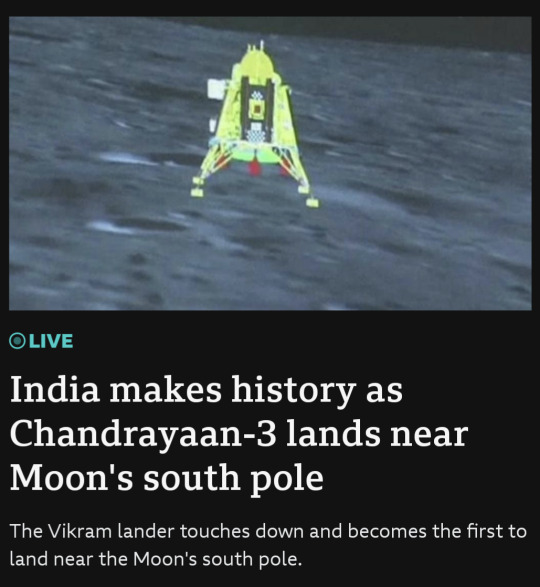
what an amazing day to be Indian ❤️ Congratulations to the physicists, engineers, scientists and all staff involved, this is outstanding 🎉
2K notes
·
View notes
Text

Raman started to work on the phenomenon of scattering of light in 1919. When he was sailing in the Mediterranean Sea, he was intrigued by the blue color of the sea. There were several hypotheses put forward for the color of the sea such as Lord Rayleigh’s in 1910, who stated that the much-admired dark blue of the deep sea has nothing to do with the color of the water, but is simply the blue of the sky seen by reflection. Raman, true to his scientific spirit studied the seawater using a pocket-sized spectroscope and a Nicol prism. The Nicol prism made it possible to view the seawater without the influence of sunlight reflected by the surface.
1 note
·
View note
Photo

Satyendra Nath Bose: Google Celebrates Indian Physicist
SatyendraNath Bose: #Google on #Saturday #celebrated #Indian #mathematician and #physicist #Satyendra Nath Bose with a special doodle for his extraordinary contribution to the field of #mathematics and #Physics. Mr.#SatyendraNathBose, well known for his work on #quantum #mechanics in the early 1920s, #delivered his quantum #formulations to #German #scientist #Albert Einstein on this day in 1924, who #recognized it as a key quantum mechanics finding. Website:
1 note
·
View note
Text
Google doodles to celebrate Indian mathematician Satyendra Nath Bose's contributions | Indiablooms
Google doodles to celebrate Indian mathematician Satyendra Nath Bose’s contributions | Indiablooms
New York: Internet search engine Google on Saturday celebrated Indian physicist and mathematician Satyendra Nath Bose’s contribution to the Bose-Einstein Condensate.
On this day in 1924, he sent his quantum formulations to Albert Einstein who immediately recognized it as a significant discovery in quantum mechanics, reads the Google Doodle website.
Bose’s journey to fame started in academics.…

View On WordPress
0 notes
Note
AITA for telling my mixed race cousin the truth about her racial background?
This happened a few months back but continues to divide our family to this day, and I have my own regrets about it, so I thought it would be good to get some outside perspective.
My little cousin (we'll call her May) was privately adopted by my aunt 17 years ago. Her biological mom already had 4 kids at home, 2 of them special needs, and she was an unplanned pregnancy. But she was also deeply religious and against abortion, so she went to her (southern baptist) church for help. My aunt was a member of that church and was having trouble conceiving, so she offered to adopt the woman's baby and she agreed.
I know all this for a fact because my aunt asked my mom to come with her as emotional support when she met with the bio mom and dad at their home to talk more about the details. I was dragged along (8 years old at the time) and saw the bio parents myself. The mom was white, and the dad was black. I sat and listened to them talk about boring adult stuff and heard both the man and woman refer to May as "their baby". Then I got bored and went in the other room to play with their kids on the xbox.
Fast forward 17 years later to the present day and May has done pretty well in life. She's a straight A student with a 4.0 and wants to be a physicist. She knows she's adopted and knows she's mixed race (would be pretty hard to hide, since both her parents are whiter than mayo and she's obviously not). I never said anything about her being half black, because I assumed she knew. I found out she does not when she was talking about looking into scholarships and says maybe she can get a scholarship for Indigenous peoples. I laugh because I assume she's joking.
May looks at me and asks why that's so funny, and I say because she's not Native American. She looks truly pissed now and like she's geared up for a fight against a racist and says yes, she is. I look at her parents for backup but they won't look me in the eye. "May, I met your parents. You're half black," I told her. She calls me a liar and says that's stupid, because her parents got her through an adoption agency and she knows she's half Native American.
Now I'll tell you, I know my aunt and uncle made jokes about how she "looks like an Indian" when she was a baby. I know they dressed her up in racist "Indian" outfits every Halloween (first I wasn't old enough to know it was racist, then I thought it's not worth the argument bringing it up). I know her cringey online persona when she was 12/13 was called "PocahontasGirl", and her online "aesthetic" has always been nature and romanticized, spiritual Native American stuff. And again, I never said anything because it wasn't worth the argument, and I figured she would grow out of it when she was less immature. I had genuinely know idea it's because her parents have been lying to her.
I tried to convince her I wasn't lying, I tried to get my aunt and uncle to back me up, but May is a terror when she's mad and she was screaming and crying at me for being racist and calling her parents liars so I just left. She's blocked me everywhere since then, and my aunt called my mom to rant about me filling her daughter's head with lies and trying to break up their happy family. My mom said I should have just left it alone, I said May deserves to know who she really is, and how can my mom condone lying to her when we both know the truth? My mom said just to drop it, it isn't any of our business. That she didn't like the fact that my aunt lied either, but bringing it up now was an asshole move because it would divide the family no matter what. Either May would believe me and hate her parents, or believe her parents and hate me.
In my heart I feel like it's wrong on so many levels to adopt a mixed race child then lie about their heritage, and I think my aunt and uncle are just plain racist. But I can't blame May for not believing me and believing the people who raised her. And I truly do miss her, having known her all her life. AITA?
What are these acronyms?
179 notes
·
View notes
Text
What’s that elephant the Danes are wearing?

Tatler’s guide to the emblems and quirks of Denmark’s highest honour, the Order of the Elephant.
A curious little diamond-encrusted elephant, a blue sash, a gold collar – and sometimes a big flaming cape…Tatler looks into the history and tradition of Denmark's most privileged Order.
With Frederik X set to become sovereign of the Order as he becomes King on Sunday, you might see a few of these elephants around Copenhagen's royal palaces
By Isaac Zamet
12 January 2024
When Crown Prince Frederik becomes Frederik X of Denmark on Sunday, he will also replace his mother, Queen Margrethe II, as the sovereign of Denmark’s most ancient and distinguished order of chivalry, the Order of the Elephant.
Though it was officially refounded in 1693, the order dates all the way back to the 1400s, when it was established as a religious confraternity by a group of about fifty Danish knights.
In the 1400s, prior to the Reformation which gripped Europe and divided the church, such religious ‘clubs’ as the Order of the Elephant were common features of aristocratic life.
At the time of the Order of the Elephant's birth, Christian I was King of Denmark – and in fact, Norway and Sweden too, creating a personal union known as the Kalmar Union.
During this period, the emblem of the club was an image of the Virgin Mary holding her Son within a crescent moon.
This was hung from a collar formed of links in the shape of elephants.
The confraternity mutated over the centuries but endured a stifled period after the Reformation in which such clubs became suspect.

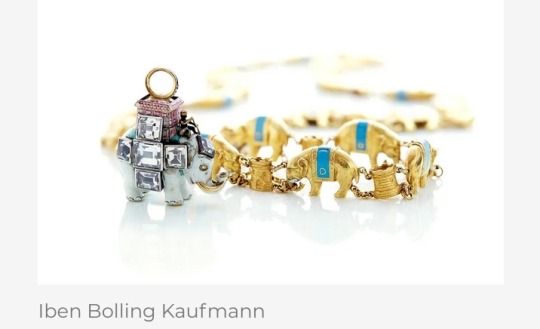
In 1580, Frederik II – eight Frederiks prior to our current Frederik – revived the order and replaced the medallion of the mother and child with an elephant (a Reformation-safe, Protestant approach – if a quirky one!).
But it was Christian V, in 1693, who gave the club its official statues and founding order.
At this time, it was scheduled as comprising 30 noble knights and one Grand Master (the King) along with his sons.
It was only in 1958 that the statutes were amended by Royal Ordinance to allow the ennoblement of women as members of the order.
Between 1580 and today, around 890 persons have been bestowed with the Order of the Elephant; with Queen Margrethe adding 68 people during her 40 year reign.
The recipients are almost always royal persons and foreign heads of state – though in a rare exception, the order was given to a commoner in 2000.


This was the deceased shipping magnate, Mærsk Mc-Kinney Møller, who was recognised for exceptional contribution to Danish economic strength and Danish society.
Those unfamiliar with the man himself will surely recognise his name from the famous shipping containers.
The A.P. Møller – Mærsk group was actually founded in 1904 by his father. It is now worth $81bn dollars.
At the time of Møller’s membership of the order, he was the only non-royal and non-head of state to hold the honour; though it had previously been held by the pioneering nuclear physicist, Niels Bohr.
Membership of the order comes with possession of its rather eye-catching elephantine emblem.
The elephant is made of white-enamelled gold with blue housings and is about 5cm high.

On its back, the elephant bears a tower of pink enamelled masonry (a design originally intended to reflect the howdah compartments of the Indian subcontinent).
A number of large cut diamonds adorn the elephant, along with a crowned monogram of the monarch reigning when it was made.
One wonders, then, when the first Frederikian elephants will be carved.
At the top of the tower on the elephant’s back sits a gold ring, from which the badge can be hung from the collar or tied to a sash.
On the elephant's back sits a turbaned ‘moor mahout.’
It should be noted that some would regard such a depiction as an exoticising caricature.
Others would regard its appearance merely as an expression of an historical perspective.

One striking detail about the circulation of the elephants is that each Order of the Elephant is – in principle – on loan and must be returned to the Chapter of the Royal Orders of Chivalry when a member of the Order has passed away.
This rather quaint custom means that elephants are inherited and used several times by different members of the order, with some dating back hundreds of years.
Interestingly, the done thing is not to disclose to whom an Elephant has previously been given – though there are some traditional lines of inheritance.
For example, the elephant recently bestowed on Prince Christian belonged previously to his grandfather, Prince Henrik.
This handing over was always to be, on the basis of a traditional line of inheritance.
There are two exceptional elephants which have eluded the rule of the ‘loan’ – one remains in the Chancellery Museum at Paris and a second remains on display at the Dwight Eisenhower Presidential Library in the US.
Another beautiful quirk of membership of the Order is that a member’s coat of arms is always painted and subsequently hung in the Knight’s Chapel at Frederiksborg Castle in Hillerød.
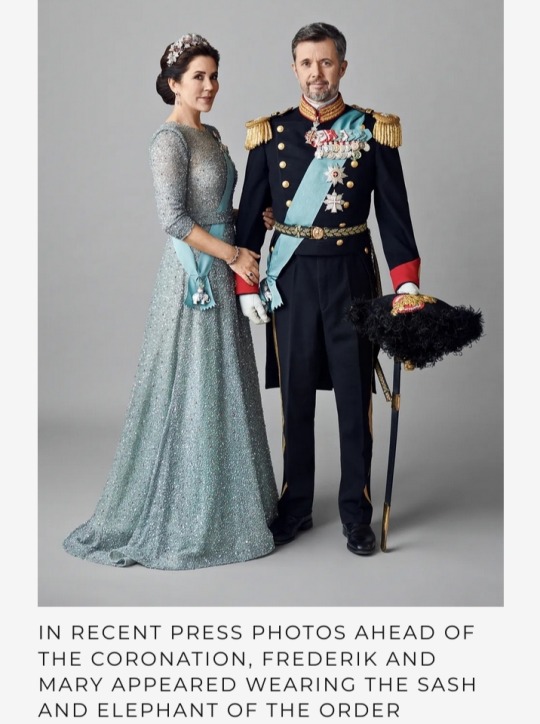
As to when the elephants come out to play, there are some rather interesting traditions concerning how and when to wear them.
The Order of the Elephant has three festival days: new year’s day, the monarch’s birthday, and the birthday of Valdemar the Victorious, which, if you didn’t know is on June 28.
On these festival days, the Order of the Elephant is worn on the chest on a gold chain link collar, with links shaped as towers and elephants.
The collar sits on each shoulder. On other important occasions, the order is worn on a bright blue sash with a breast star.
The star of the order is an eight-pointed silver star with smooth rays; at its centre sits an enameled red disc with a white cross, surrounded by a laurel wreath in silver.
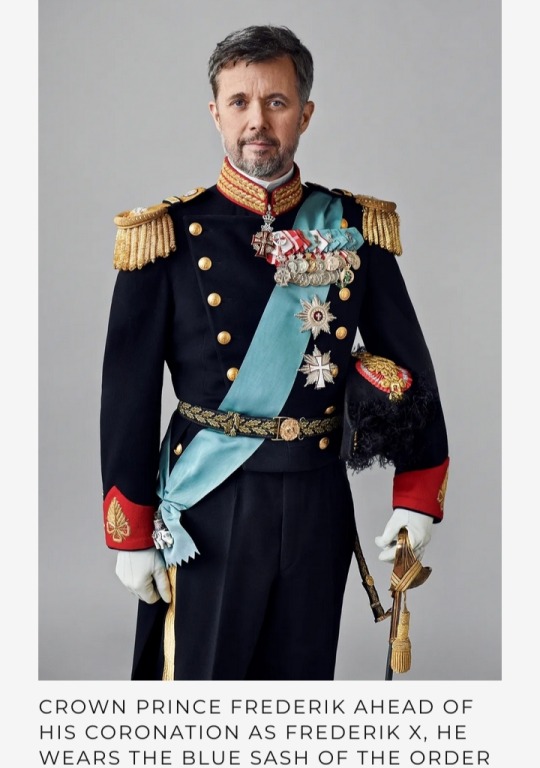

#Frederik X#Queen Margrethe II#Monarchy of Denmark#Danish Royal Family#House of Glücksburg#Christian I#Kalmar Union#Order of the Elephant#Frederik II#Christian V#Mærsk Mc-Kinney Møller#Frederikian elephants#Chancellery Museum#Dwight Eisenhower Presidential Library#Knight’s Chapel#Frederiksborg Castle#Crown Prince Christian of Denmark#Queen Mary of Denmark
31 notes
·
View notes
Text
The atomic theory developed by Acharya Kanad over two millennia ago have been described as "brilliant imaginative explanations of the physical structure of the world, and in a large measure, agreed with the discoveries of modern physics."
24 notes
·
View notes
Text
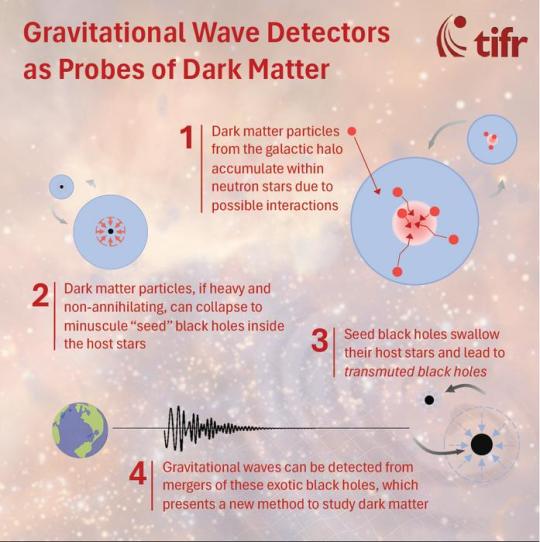
Gravitational wave detectors as probes of dark matter
Dark matter is a keystone assumption in the current understanding of the Universe. Yet, the elemental identity of dark matter is not known, and its future discovery remains a primary goal in the fields of cosmology and particle physics. A team of theoretical physicists from the Tata Institute of Fundamental Research in Mumbai, the Indian Institute for Science in Bengaluru, and the University of California at Berkeley, have proposed a new method to probe dark matter. The method leverages gravitational wave searches to look for dark matter through its predicted effects on neutron stars.
Sulagna Bhattacharya, graduate student at TIFR and lead-author of the study published in Physical Review Letters, explains — dark matter particles in the galaxy can accumulate in neutron stars due to their non-gravitational interactions. The accumulated particles form a dense core, that collapses to a minuscule black hole in the scenario that dark matter particle is heavy and has no antiparticle counterpart; a scenario that has proved difficult to test otherwise in laboratory experiments. For a large allowed range of dark matter particle mass, the initial seed black hole consumes its host neutron star and transmutes it to a neutron-star-mass black hole. Crucially, theories of stellar evolution predict that black holes form when neutron stars exceed about 2.5 times the mass of the Sun, as encoded in the Tolman-Oppenheimer-Volkoff limit, but here dark matter leads to low-mass black holes that are typically smaller than the maximal neutron star. Anupam Ray, who co-led the work, points out that “for dark matter parameters that are not yet ruled out by any other experiment, old binary neutron star systems in dense regions of the galaxy ought to have evolved into binary black hole systems. If we do not see any anomalously low-mass mergers, it puts new constraints on dark matter.”
Intriguingly, some of the events detected by LIGO, e.g., GW190814 and GW190425, appear to involve at least one low-mass compact object. A tantalizing suggestion, based on pioneering work by Hawking and Zeldovich from the 1960s, is that low-mass black holes could be of a primordial origin, i.e., created by exceedingly rare but large density fluctuations in very early universe. Motivated by these considerations, the LIGO collaboration has undertaken targeted searches for low-mass black holes and set limits. The present study by Bhattacharya and collaborators shows that same non-detection of low-mass mergers by LIGO also puts stringent constraints on particle dark matter. The constraints presented in this study hold significant value, as they explore parameter space that is well beyond the reach of the current terrestrial dark matter detectors like XENON1T, PANDA, LUX-ZEPLIN, especially for heavy dark matter particles.
Mergers of low-mass black holes are expected to be detectable not only using existing gravitational wave detectors such as LIGO, VIRGO, and KAGRA, but also by upcoming detectors like Advanced LIGO, Cosmic Explorer, and the Einstein Telescope. By considering the planned upgrades of current gravitational wave experiments, and accounting for their increased sensitivity and observation time, the study forecasts the constraints that could be obtained within the next decade. In particular, the study shows, gravitational wave observations can probe extremely feeble interactions of heavy dark matter, well below the so-called “neutrino floor” where conventional dark matter detectors have to contend with the astrophysical neutrino backgrounds. Instead, if exotic low-mass black holes are discovered in the future, it could be a valuable hint about the nature of dark matter. The authors sign-off optimistically noting, “gravitational wave detectors, which have already proved useful for the direct detection of black holes and gravitational waves predicted by Einstein, may end up as a powerful tool to test theories of dark matter as well.”
24 notes
·
View notes
Text
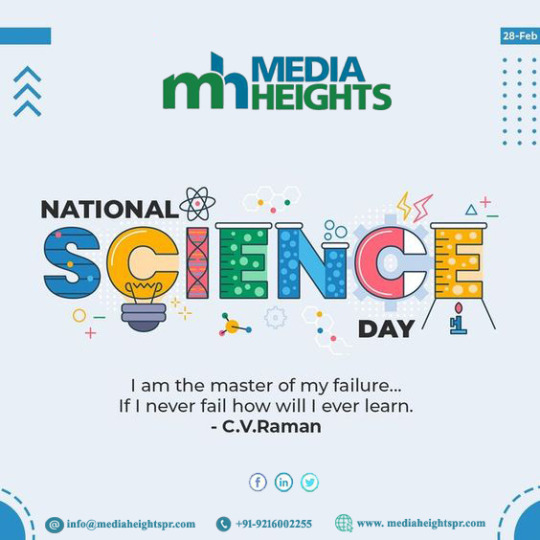
National Science Day is celebrated annually on February 28 to commemorate the discovery of the 'Raman Effect'. Sir Chandrasekhara Venkata Raman, an Indian physicist, announced the discovery of the 'Raman Effect' on February 28, 1928 . Build your brand with digital media & take the benefits of social media branding contact Media Heights. By Mediaheightspr.com #nationalscienceday
Digitalbranding #MEDIAHEIGHTS #advertisingagency #web #MEDIAHEIGHTSPRCOM #best #public #relation #agency #in #chandigarh #mohali #punjab #north #india #digitalmarketingcompany #searchengineoptimization #content #instagrammarketing #buildingrelationships #globally #customer #internetbanding — at media heights #smo #branding #facebook #twitter #marketingonline #brand #searchengineoptimization #internetmarketing #follow #digitalagency #marketingagency #motivation #digitalmarketingtips #onlinebusiness #websitedesign #marketingonline #brand #searchengineoptimization #content #instagrammarketing #advertisingagency #web #technology #onlinebranding #branding360degree #SEO #SEObrandingagency #websiteranking #websitetrafic #Digitalmarketing #mediaheights #OnlineAdvertising #instagrammarketing #advertisingagency #web #marketingonline #brand
#National Science Day is celebrated annually on February 28 to commemorate the discovery of the 'Raman Effect'. Sir Chandrasekhara Venkata Ra#an Indian physicist#announced the discovery of the 'Raman Effect' on February 28#1928 . Build your brand with digital media & take the benefits of social media branding contact Media Heights. By Mediaheightspr.com#nationalscienceday#Digitalbranding#MEDIAHEIGHTS#advertisingagency#web#MEDIAHEIGHTSPRCOM#best#public#relation#agency#in#chandigarh#mohali#punjab#north#india#digitalmarketingcompany#searchengineoptimization#content#instagrammarketing#buildingrelationships#globally#customer#internetbanding — at media heights#smo#branding
1 note
·
View note
Text
India has landed on the Moon!!! The landing is part of the Indian Space Research Organisation (ISRO)'s historic Chandrayaan-3 mission.
"'We have achieved soft landing on the moon,'" said ISRO Chairman Shri Somanath. 'Yes, on the moon!'"
"[Indian Prime Minister Narenda Modi] then addressed the ISRO team, speaking in Hindi but adding in English, 'India is now on the moon!'
'The success belongs to all of humanity,' he said. 'And it will help moon missions by other countries in the future. I'm confident that all countries in the world ... can all aspire for the moon and beyond. ... The sky is not the limit!'"
The remote operated lander named Vikram touched down in the south pole region at 6:02pm IST on August 23, 2023. Vikram carried a small but mighty companion, the lunar rover Pragyan (Sanskrit, "wisdom").
Vikram is named after Vikram Sarabhai, PhD, physicist, astronomer, and a major figure in the development of India's space and nuclear programs. Sarabhai served as the first chairman of the ISRO, as well as the driving force behind the organization's creation. Recognizing the need for more coordinated space research in India, Sarabhai urged the Indian government to create INCOSPAR - the committee that eventually formed the ISRO in 1969.
#india moon mission#indian space research organisation#chandrayaan3#ISRO#chandrayaan-3#vikram lander#India moon landing#pragyan rover#Vikram Sarabhai
14 notes
·
View notes
Note
The vedic astrology girlie here.
You see, vedic astrology is derived from the Indian religious texts - the Vedas. The gods and goddesses that rule over and protect the nakshatras are described in there. Nakshatras also have the energy of these deities and people's life events resemble of the deities of their nakshatras.
The most important planet in a person's birth chart is his moon. It has the biggest effect on a person. Jimin has a Rohini nakshatra moon.
We have 27 nakshatras after the 27 spouses of the moon god. Every nakshatra is the god's spouse. Rohini is the favourite spouse. She is the youngest of the wives, known for her captivating singing, dancing, beauty and charms. She was also really smart.
The moon spent so much time with Rohini and loved her so much that he forgot about all other 26 wives which made them jealous and bitter. They even complained about it to another powerful god and he made the moon god sign a contract that he would spend time with each of his wives.
So, the story of Rohini also applies to those who have personal placements in this nakshatra. These people often attract an insane amount of jealousy but also attention. They are very attractive and artistic. Have quite youthful appearance. Known for their soft and romantic facial features. Very loved and sought after, sensual. You see where I am going? And the Marylin Monroe-Jimin comparison is kinda funny. She has a Rohini nakshatra placement but in her case it's her sun in Rohini. Lately I've seen a lot of comparison of Jimin and Cillian Murphy, and guess what? He's a Rohini sun, too.
And coming back to Jimin's Mula ascendant. Nakshatras also have their own celestial object that rules over them. Mula's ruler is the supermassive black hole that is located in the center of our galaxy. Our galaxy LITERALLY revolves around it and everything is attracted to this black hole because of its' gravitational force. Black holes are mysterious scary fuckers that physicist have been obsessing over for decades. People with Mula nakshatra are the center of people's attention as well. They leave strong impression and tend to attract connections.
Also let me tell you that Jimin's chart indicates A LOT of hidden enemies, secrets, obsession and jealousy from people. But the interesting thing is that all these themes come together in the Jyeshta nakshatra. Jyeshta is known as the king of the nakshatras. The fighter and the winner who destroy its' enemies. So, one way or another Jimin's gonna come out as the winner. His chart kinda gives off the vibes of the last survivor (both mula and jyeshta indicate it and both of these nakshatras are very prominent in his chart). Btw, he also has insane abilities for manifestation lol.
There is also so much more to tell about his chart (especially his chitra nakshatra sun and the way his chick|snake emoji is related to his rohini moon). He has quite hard but very powerful chart.
Oh god!! This is so interesting!
I love reading about this. And it matches jimin perfectly. Woww.
You're amazing anon.
17 notes
·
View notes
Text
The Santa Anas
There is something uneasy in the Los Angeles air this afternoon, some unnatural stillness, some tension. What it means is that tonight a Santa Ana will begin to blow, a hot wind from the northeast whining down through the Cajon and San Gorgonio Passes, blowing up sand storms out along Route 66, drying the hills and the nerves to flash point. For a few days now we will see smoke back in the canyons, and hear sirens in the night.
I have neither heard nor read that a Santa Ana is due, but I know it, and almost everyone I have seen today knows it too. We know it because we feel it. The baby frets. The maid sulks. I rekindle a waning argument with the telephone company, then cut my losses and lie down, given over to whatever it is in the air. To live with the Santa Ana is to accept, consciously or unconsciously, a deeply mechanistic view of human behavior.
I recall being told, when I first moved to Los Angeles and was living on an isolated beach, that the Indians would throw themselves into the sea when the bad wind blew. I could see why. The Pacific turned ominously glossy during a Santa Ana period, and one woke in the night troubled not only by the peacocks screaming in the olive trees but by the eerie absence of surf. The heat was surreal. The sky had a yellow cast, the kind of light sometimes called "earthquake weather". My only neighbor would not come out of her house for days, and there were no lights at night, and her husband roamed the place with a machete. One day he would tell me that he had heard a trespasser, the next a rattlesnake.
"On nights like that," Raymond Chandler once wrote about the Santa Ana, "every booze party ends in a fight. Meek little wives feel the edge of the carving knife and study their husbands' necks. Anything can happen." That was the kind of wind it was. I did not know then that there was any basis for the effect it had on all of us, but it turns out to be another of those cases in which science bears out folk wisdom.
The Santa Ana, which is named for one of the canyons it rushers through, is foehn wind, like the foehn of Austria and Switzerland and the hamsin of Israel. There are a number of persistent malevolent winds, perhaps the best know of which are the mistral of France and the Mediterranean sirocco, but a foehn wind has distinct characteristics: it occurs on the leeward slope of a mountain range and, although the air begins as a cold mass, it is warmed as it comes down the mountain and appears finally as a hot dry wind. Whenever and wherever foehn blows, doctors hear about headaches and nausea and allergies, about "nervousness," about "depression."
In Los Angeles some teachers do not attempt to conduct formal classes during a Santa Ana, because the children become unmanageable. In Switzerland the suicide rate goes up during the foehn, and in the courts of some Swiss cantons the wind is considered a mitigating circumstance for crime. Surgeons are said to watch the wind, because blood does not clot normally during a foehn.
A few years ago an Israeli physicist discovered that not only during such winds, but for the ten or twelve hours which precede them, the air carries an unusually high ratio of positive to negative ions. No one seems to know exactly why that should be; some talk about friction and others suggest solar disturbances. In any case the positive ions are there, and what an excess of positive ions does, in the simplest terms, is make people unhappy. One cannot get much more mechanistic than that.
Slouching Towards Bethlehem, 1969, Joan Didion.
17 notes
·
View notes
Text
Asian Heritage Month Book Reccomendations
Fiction

Its events take place in the fifth century AD between Upper Egypt, Alexandria and northern Syria, following the adoption of Christianity by the Roman Empire, and the ensuing internal sectarian conflict between the church fathers on the one hand, and the new believers on the other hand, declining paganism.
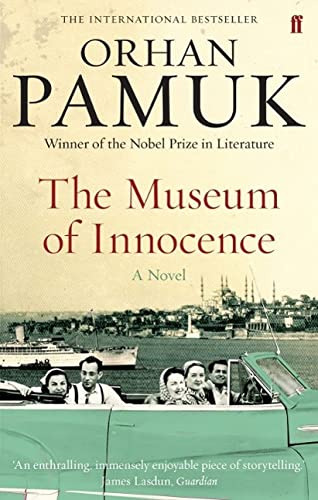
The Museum of Innocence - set in Istanbul between 1975 and today - tells the story of Kemal, the son of one of Istanbul's richest families, and of his obsessive love for a poor and distant relation, the beautiful Fusun, who is a shop-girl in a small boutique.
In his romantic pursuit of Fusun over the next eight years, Kemal compulsively amasses a collection of objects that chronicles his lovelorn progress-a museum that is both a map of a society and of his heart. The novel depicts a panoramic view of life in Istanbul as it chronicles this long, obsessive love affair; and Pamuk beautifully captures the identity crisis experienced by Istanbul's upper classes that find themselves caught between traditional and westernised ways of being.
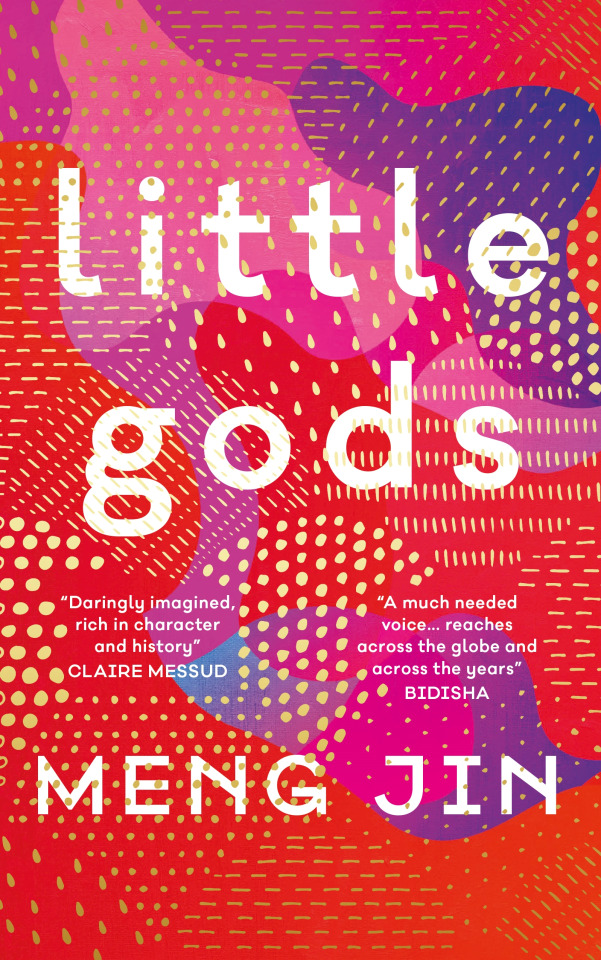
On the night of the Tiananmen Square massacre, a woman gives birth alone in a Beijing hospital. So begins the slow unravelling of Su Lan: a woman determined to remake herself, an ambitious physicist and ambivalent mother who becomes consumed by her research into disproving the irreversibility of time. Following Su Lan's sudden death, her daughter Liya travels from the US to China to try to understand the silences and ghosts her mother left behind. Adrift in a country she doesn't know, Liya begins to piece together how her mother's obsessive desire to erase her own past has marked the lives of those around her, and Liya's own.

his is the story of Rahel and Estha, twins growing up among the banana vats and peppercorns of their blind grandmother's factory, and amid scenes of political turbulence in Kerala. Armed only with the innocence of youth, they fashion a childhood in the shade of the wreck that is their family: their lonely, lovely mother, their beloved Uncle Chacko (pickle baron, radical Marxist, bottom-pincher) and their sworn enemy, Baby Kochamma (ex-nun, incumbent grand-aunt).
Non-Fiction
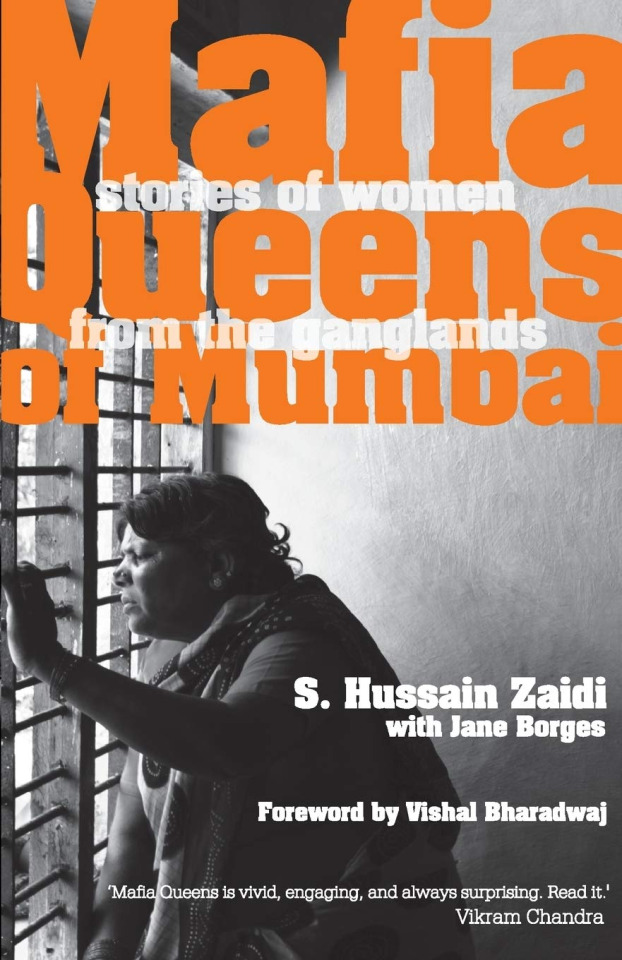
Mafia Queens of Mumbai: Stories of women from the ganglands is an Indian 2011 non-fiction crime novel written by Hussain Zaidi with original research by reporter Jane Borges. It tells 13 true stories of women who were involved in criminal activities in Mumbai.
I highly reccomend watching Gangubai which follows the story of Gangubai Kothewali who fought for the rights of orphans and sex workers in Mumbai during the 60s. It is on Netflix.
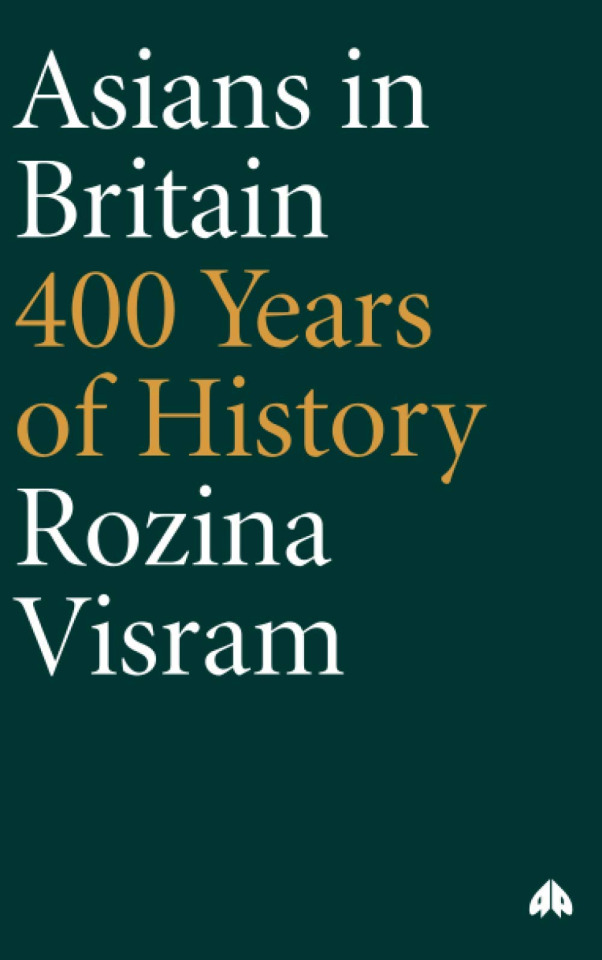
This is a comprehensive history of Asians from the Indian subcontinent in Britain. Spanning four centuries, it tells the history of the Indian community in Britain from the servants, ayahs and sailors of the seventeenth century, to the students, princes, soldiers, professionals and entrepreneurs of the 19th and 20th centuries. Rozina Visram examines the nature and pattern of Asian migration; official attitudes to Asian settlement; the reactions and perceptions of the British people; the responses of the Asians themselves and their social, cultural and political lives in Britain. This imaginative and detailed investigation asks what it would have been like for Asians to live in Britain, in the heart of an imperial metropolis, and documents the anti-colonial struggle by Asians and their allies in the UK. It is an invaluable contribution to our understanding of the origins of the many different communities that make up contemporary Britain.

Japan 1945. In one of the defining moments of the twentieth century, more than 100,000 people were killed instantly by two atomic bombs dropped on Hiroshima and Nagasaki by US Air Force B29s. Hundreds of thousands more succumbed to their horrific injuries, or slowly perished of radiation-related sickness.
Hiroshima Nagasaki tells the story of the tragedy through the eyes of the survivors, from the twelve-year-olds forced to work in war factories to the wives and children who faced it alone. Through their harrowing personal testimonies, we are reminded that these were ordinary people, given no warning and no chance to escape the horror.
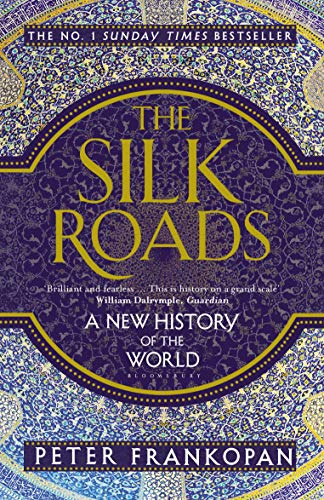
For centuries, fame and fortune was to be found in the west in the New World of the Americas. Today, it is the east which calls out to those in search of adventure and riches. The region stretching from eastern Europe and sweeping right across Central Asia deep into China and India, is taking centre stage in international politics, commerce and culture and is shaping the modern world.
This region, the true centre of the earth, is obscure to many in the English-speaking world. Yet this is where civilization itself began, where the world's great religions were born and took root. The Silk Roads were no exotic series of connections, but networks that linked continents and oceans together. Along them flowed ideas, goods, disease and death. This was where empires were won and where they were lost. As a new era emerges, the patterns of exchange are mirroring those that have criss-crossed Asia for millennia. The Silk Roads are rising again.
I am not going to lie, I had all the books and reviews written but I deleted that post when I went to post it so here are the books with synopsis I got from Waterstones because I am too lazy to rewrite. 😃👍
125 notes
·
View notes